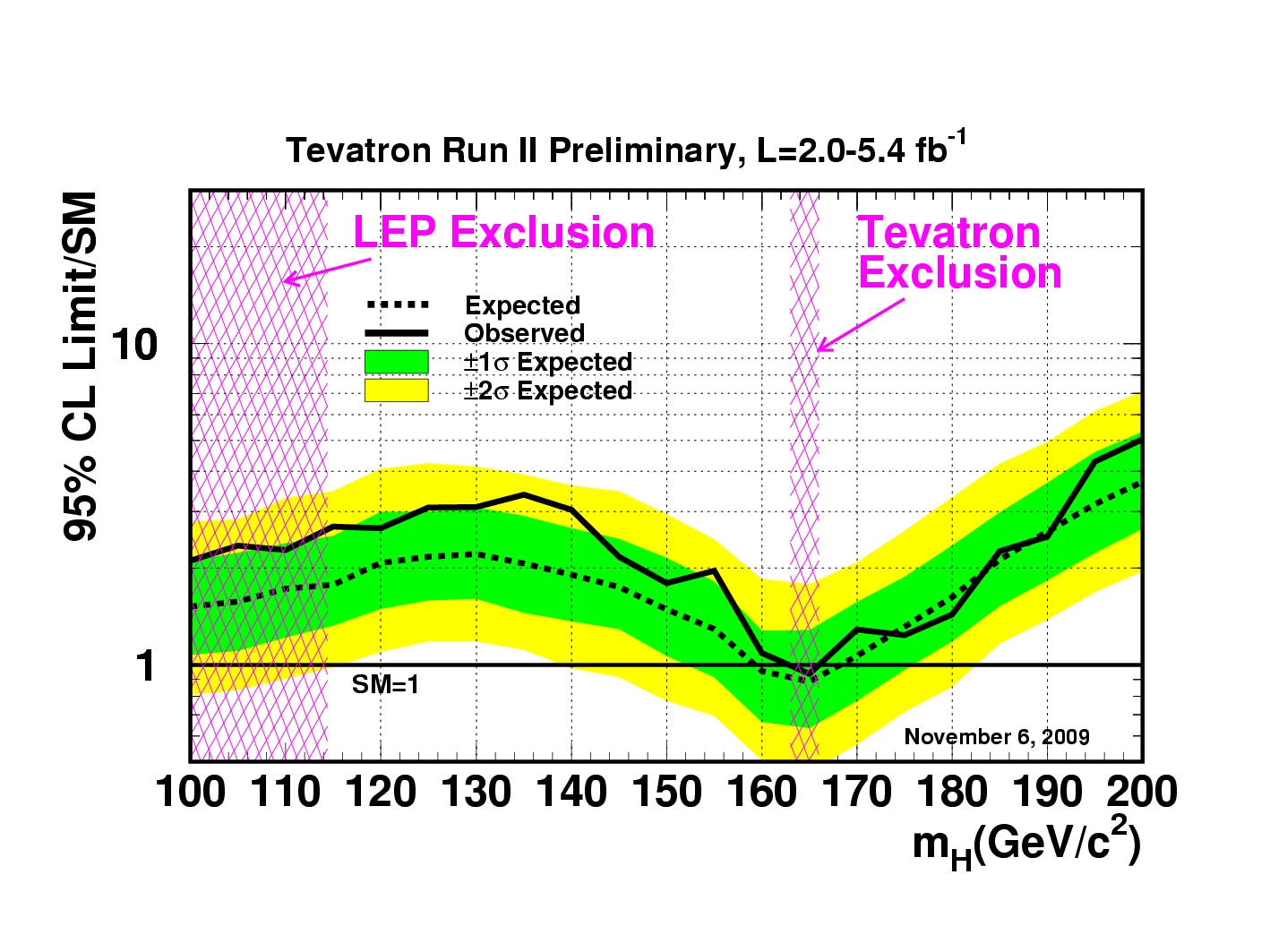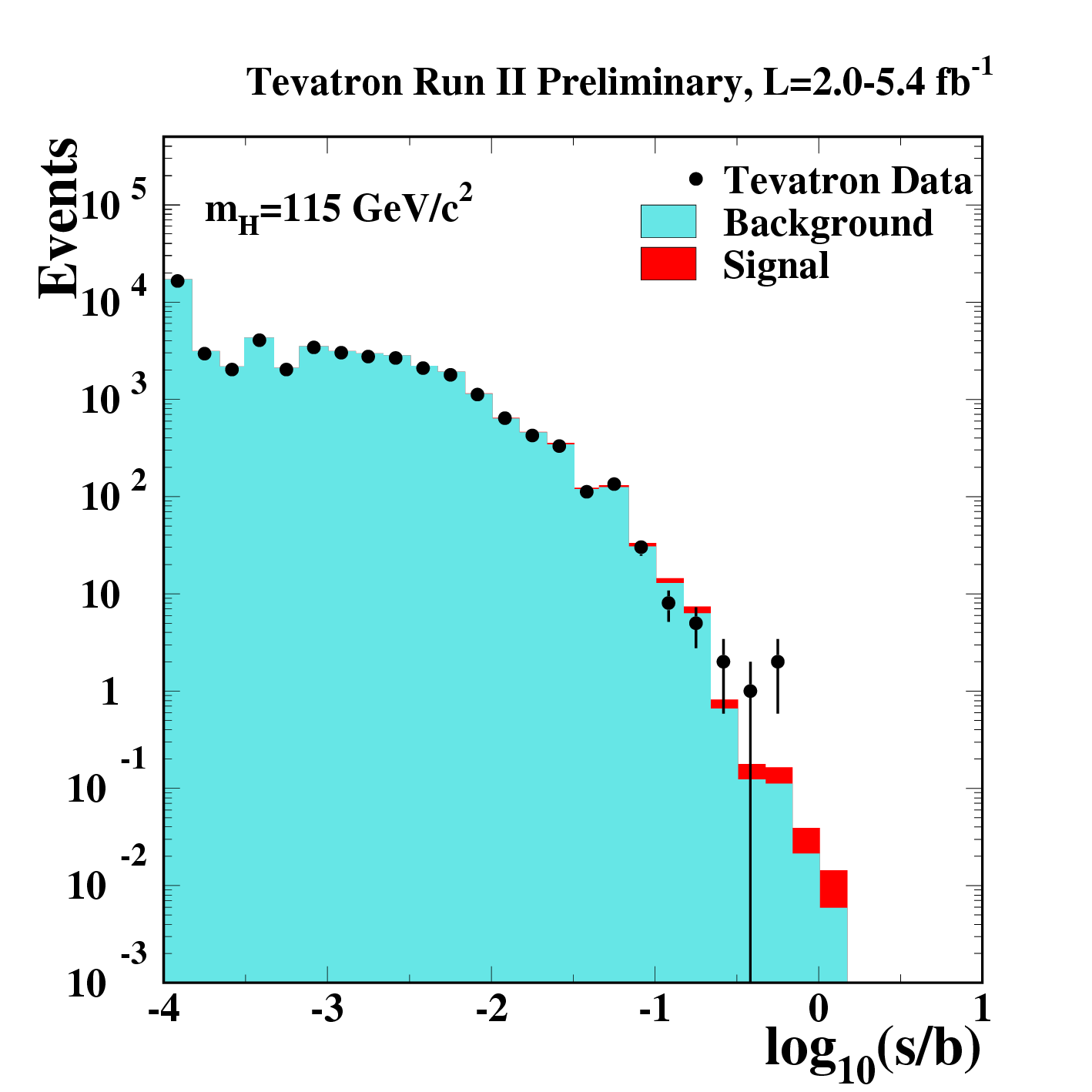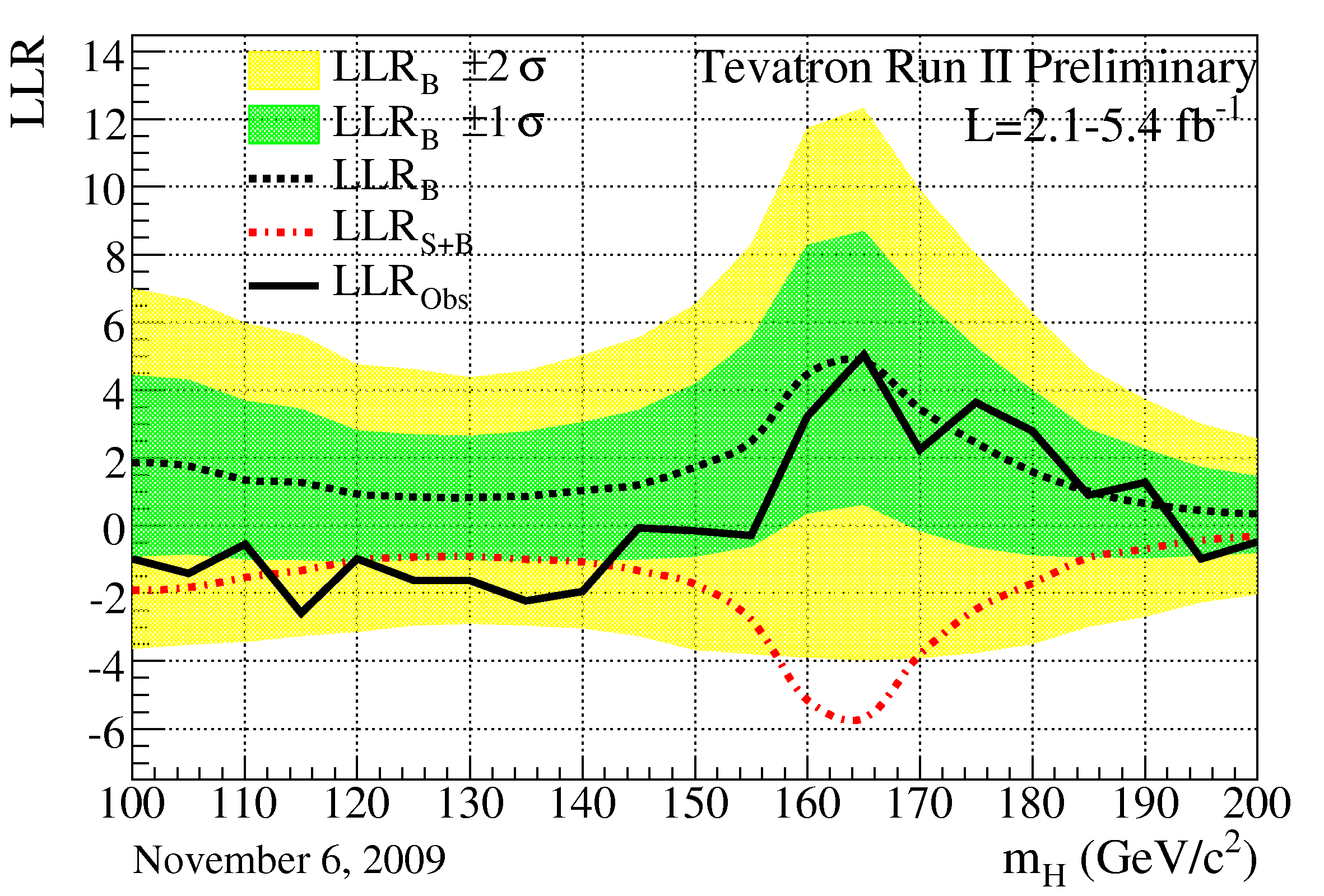It happens in the best families, so they say. Two experiments work 24/7 to produce an improved result on the Higgs search, and the result is disappointing, to say the least.
I am talking about the Tevatron, of course. For a little while longer, CDF and D0 will have the exclusive on Higgs boson searches. Last March, we all rejoyced when we saw that the Tevatron was starting to become sensitive to a high-mass Higgs, and indeed it excluded its existence in a range of masses between 160 and 170 GeV. We were waiting for more exclusions for the winter conferences of 2010, when more data would be used to produce improved results. Instead, no improvement, but actually, a retractatio. How is that possible ??
It so happens that the March 2009 results -an exclusion of the range 160-170 GeV of Higgs boson masses- had been produced by a downward fluctuation of backgrounds. Nothing strange, of course: when you are testing the existence of a tiny signal on top of a large background, a fluctuation one way or the other is bound to happen sooner or later. But what does feel strange is that the same data which had produced the downward fluctuation, increased by maybe 30% or 40%, now recedes and produces no exclusion: the added data have a fluctuation of the opposite sign, and results are now in line with expectations; and expectations, tragically, are that the Tevatron data is insufficient to exclude the 160-170 GeV region: indeed, the new result is a 95% C.L. exclusion only in the 163-166 GeV region, as the figure below shows.
So what should you get home, at the end of the day ? Is a 161 GeV Higgs still allowed ? Why something that had been declared dead last March is resurrected now ?
The problem is not in the results of the Tevatron, of course, but in their interpretation. Last March, the data were showing that a 160-170 GeV Higgs was less than 1-in-20 likely, now, it is more likely, if only marginally. No xx% CL. limit can ever exclude with certainty anything: in fact, xx, if smaller than 100%, is just a degree of belief about how unlikely it is that the particle is in the excluded range. Still, it does feel strange to hear that the limit has shrunk.
Rather than feeling let down by the Tevatron, let us instead try and get excited about the chance that there is something going on at lower mass: in fact, the Tevatron is seeing a definite excess of events in Higgs searches geared towards a low Higgs mass: for 115 GeV, there is a just less than 2-sigma upward fluctuation of the data! Is this the first scent of Higgs we get to smell after the LEP2 1.7-sigma result of eight years ago ?
Well, it is. Take a look at the picture below: there is an excess of events at the highest values of discriminant, in the searches for a light Higgs! And the excess is even more marked than if there was a standard model Higgs there!
The result can best be discussed by having a close look at the Log-Likelihood ratio plot below, which shows what the Tevatron experiments should see if there was (black dots), or if there was no (red dots), Higgs boson. The discriminating variable on the vertical axis is a log-likelihood ratio, but you need not be concerned with its precise definition: let us just say it is a value which can tell apart the two hypotheses.
The two curves are only mildly separated at low mass, where the Tevatron has limited sensitivity; they part significantly only at about 160 GeV, where indeed, if a Higgs was there, the CDF and D0 experiments would have seen it by now, at over two standard deviations significance. Instead, for 115 GeV the expectation for the two hypotheses are only separated by about one standard deviation. But the data (represented by the thick black line) not only agrees more with the signal+background hypothesis: it goes even further, showing to be even more signal-like than expected, for 115 GeV!
In summary, the whole region 115-140 GeV is much more signal-like than it is background-like in the data that CDF and D0 are disclosing today. This might very well be the first indication that a Higgs boson is being produced at the Tevatron, if only in very small amounts, and that the signal is producing its first observable effects.
I am blogging from a remote location with limited internet connectivity, so I have to stop this post here now; but you may well imagine that the new Tevatron results are definitely more exciting than disappointing: while the 160-170 GeV window of exclusion has shrunk, the 115 GeV abundance has become a definite excess, not yet significant but worth keeping a very close eye on! Expect a more careful discussion on this issue shortly.




Comments